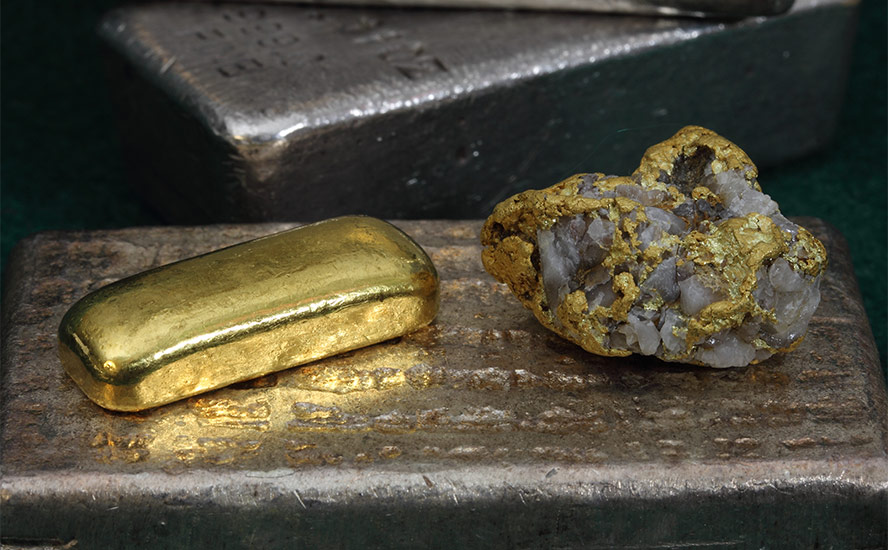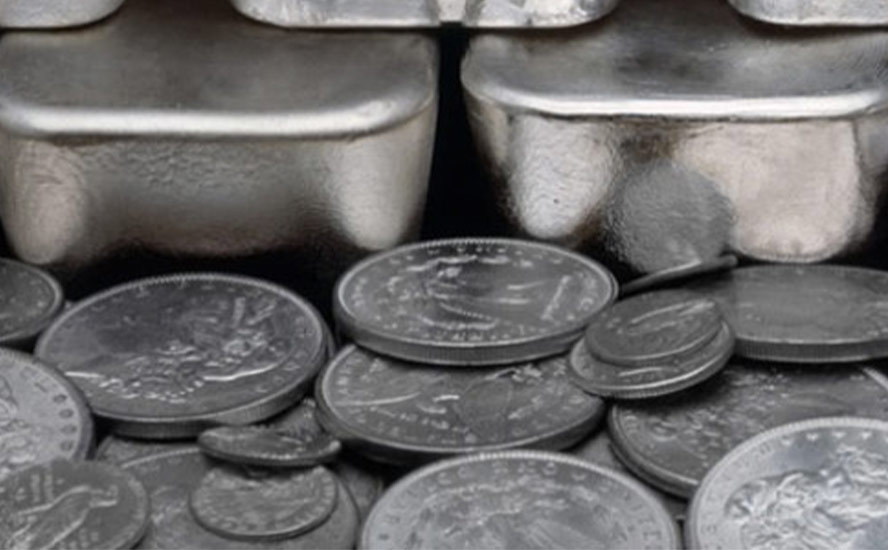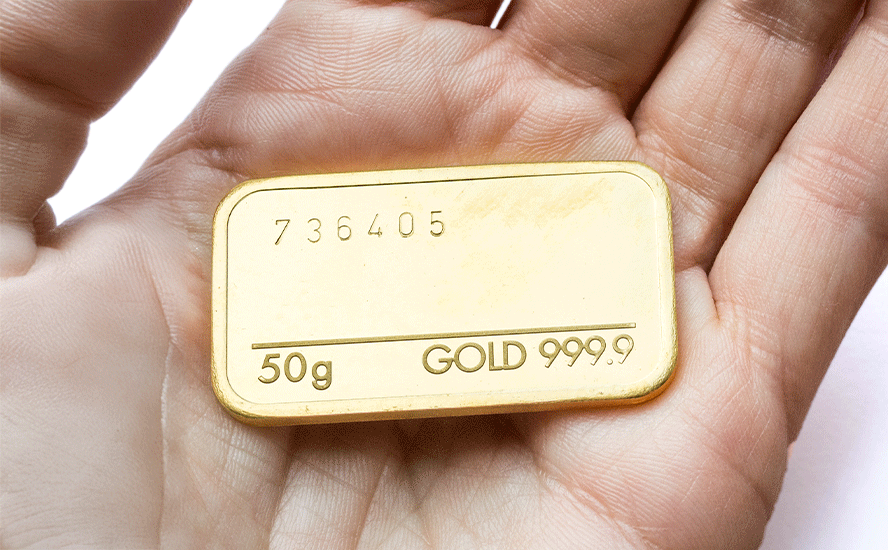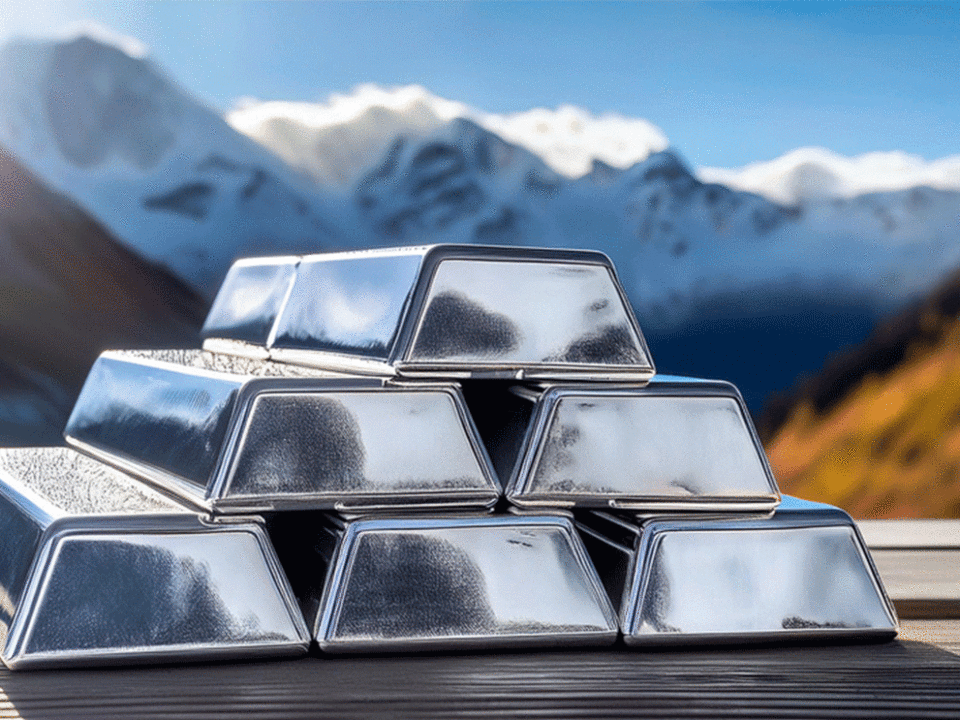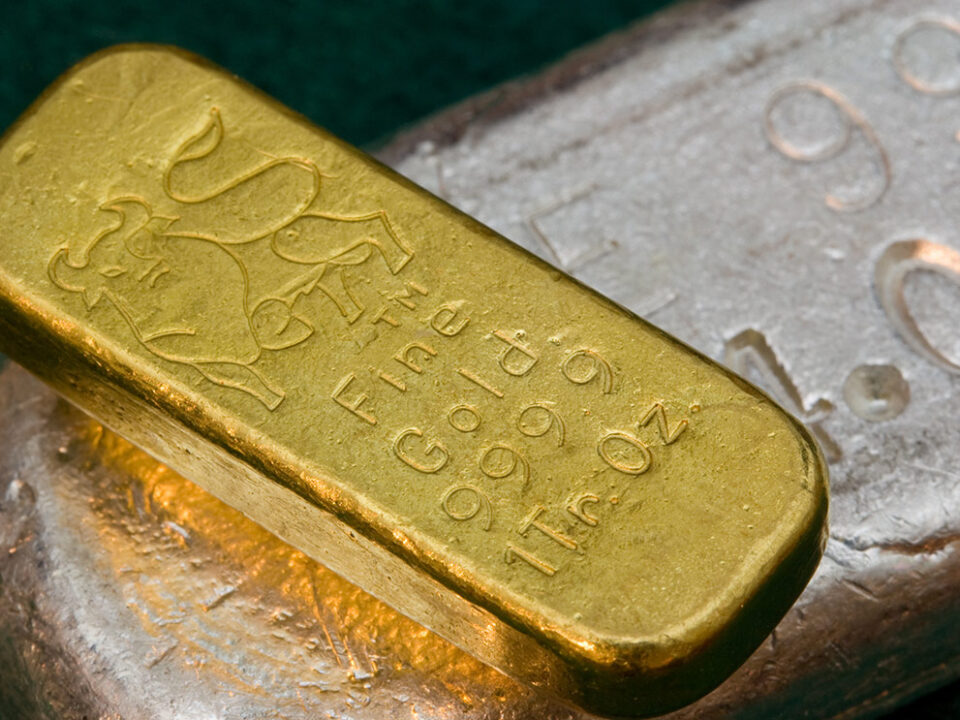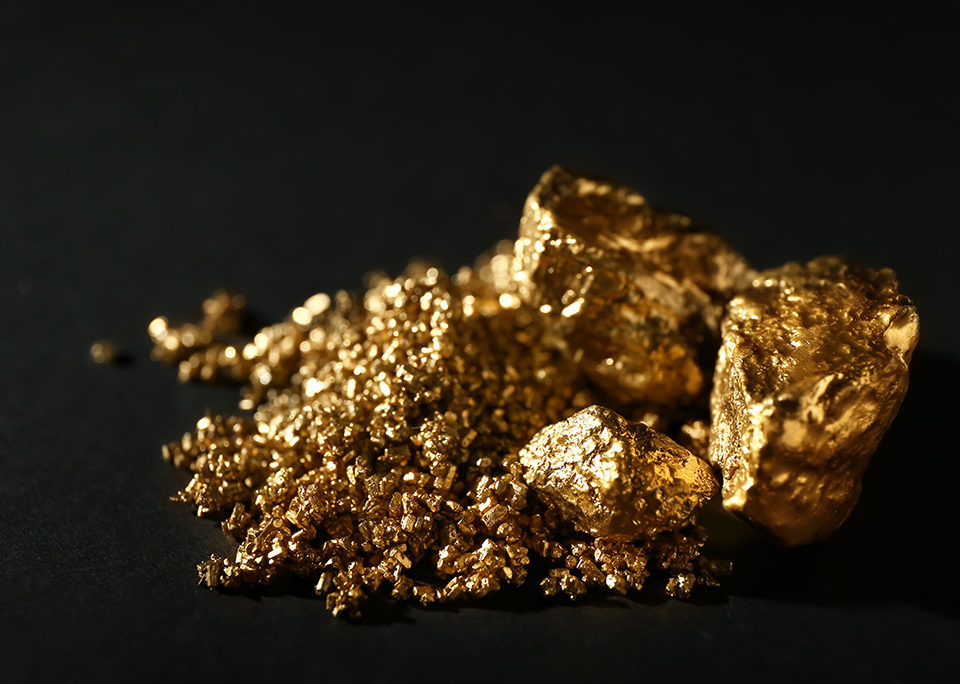Max to drill URU in October; geophysical survey results correlate with surface geochemical anomalies
2022.10.03
Max Resource (TSXV:MAX; OTC:MXROF; Frankfurt:M1D2) is less than two weeks away from drilling its highest-priority drill target, URU, within its CESAR copper-silver project in northeastern Colombia.
This week, Vancouver-based Max reported its ground-based Induced Polarization (IP) and Total Magnetic Intensity (TMI) anomalies correlated well with surface geochemical targets, and successfully defined new drill targets at URU-C and URU-CE.
Two copper-silver rich discoveries slated for drill-testing at “URU Central” extend at least 200m below surface. The two drill targets are “URU-C” and “URU-CE”.
URU Central forms part of the 20-km-long URU District, located along the southern portion of the CESAR North 90-km-long copper-silver belt.
URU-C returned chip channel widths of 9.0m @ 7.0% copper + 115 g/t silver and 16.8m @ 8.3% copper + 146 g/t silver at the lower levels of the prospect. The upper level, 190m in elevation higher, is 290m along strike and returned 4.9% copper + 41 g/t silver along a 52m ridge line.
The second discovery, URU-CE, is located 750m to the east of URU-C. It consists of substantial-sized outcrops with visible copper mineralization, trending south-southwest for 250m of strike, open in all directions. Continuous channel sampling at URU-CE returned 19.4m @ 1.3% copper + 2.5 g/t silver.
This area, shown in the drone video below (Figure 4a), will be drill-tested. Max reports that the drill rig has been mobilized, with drilling expected to start on or before October 11th.
CESAR Project
For the past three years, Max has not only been discovering high-grade copper zones on its flagship CESAR property, but expanding these areas, moving ever closer to confirming the existence of a huge copper-silver system.
The project sits on a massive sedimentary system covering a significant portion of the 200-km-long Cesar Basin, a geological feature that extends for over 1,000 km from the northern tip of Colombia southwards through Ecuador and Peru.

There is access to major infrastructure resulting from oil & gas and mining operations, including Cerrejón, the largest coal mine in South America, held by global miner Glencore.
Max’s corporate goal is to transition the Cesar Basin towards the mining of copper, a key metal for Colombia’s transition to clean energy.
Earlier this year Max signed a two-year co-operation agreement with Endeavour Silver Corp. (TSX:EDR), a mid-tier silver producer and explorer focused on Mexico. Endeavour has agreed to assist Max in significantly expanding its land holdings at CESAR, by providing financial and technical capabilities to secure new mineral tenures in the Cesar Basin. Endeavour will receive a 0.5% NSR royalty on new mineral tenures acquired by Max, but not on Max’s existing ones.
Max is focused on three copper-silver districts, each located along the CESAR 90-kilometer-long belt, with the objective of expanding the zones and defining drill targets. The next step is an inaugural drilling program at URU-C and URU-CE. The districts are:
- The 32-km long AM District with highlight values of 34.4% copper and 305 g/t silver;
- The Conejo District, averaging 4.9% copper (2% cut-off) over 3.7-km;
- The 20-km long URU District, which includes the URU-C and URU-CE discoveries, highlighted by channel sampling of: 7.0m @ 8.5% copper + 143 g/t silver; 16.8m @ 8.3% copper + 146 g/t silver; 52mn @ 4.9% copper + 41 g/t silver; 19.4m @ 1.3% copper + 2.5 g/t silver.

Max has so far received 21 mining concessions covering a total area of 188 km² — more than any other company has ever received in Colombia.
This significant milestone paves the way for Max to initiate drilling on its URU concessions.
“The main objective of this initial drilling program at URU is to confirm the down dip continuation of the copper-silver mineralization for both the URU-C and URU-CE discoveries. Follow-up drilling will target mineralization along strike and further down dip. To gauge the enormity of the URU District, Max’s drilling is currently targeting a significant 1-km of strikeof the URU 20-km-long surface copper-silver mineralization,” said Max’s CEO, Brett Matich, in the Sept. 28 news release.
URU District
The URU discovery spans a major structural corridor and remains open in all directions. It is located on the southern portion of Max’s 90-km-long CESAR copper-silver project, shown below in Figures 3 and 4.

Geologically, Max compares the sediment-hosted copper-silver mineralization at URU to that found in the Central African Copper Belt.
Almost half of the copper known to exist in sediment-hosted deposits is contained in the CACB, including Ivanhoe Mines’ 95-billion-pound Kamoa-Kakula copper deposit in the DRC.

(Click below to view video)
https://youtu.be/7ErABV-krC0
IP results
To follow Max’s progress at CESAR, it is important to understand the sequence of events. First, the Max field team conducted an IP survey at URU so that they could see in three dimensions what the mineralization looks like before they start drilling it. Because the primary copper mineral is highly conductive chalcocite, it lights up nicely on an IP geophysical survey.
IP is beneficial not only for helping to guide the drilling, but in showing the market the size and magnitude of the deep-seated structures Max is expecting to find with the drill bit.
The 14-line-kilometer Induced Polarization (IP) and Ground Magnetometer (TMI) survey consisted of seven lines spaced at 100m and with IP stations every 50m. At URU-C and URU-CE, the IP chargeability and TMI anomalies correlate with surface copper-silver mineralization, indicating the mineralized zone extends to over 500m northeast, and dips to the east. Also, an extended 20-line-km TMI survey is underway, testing the northern extensions of the TMI anomalies.
In its Sept. 28 news release, regarding the IP results, Max states that The high-resolution IP survey has now provided coverage over an 800m North South area, covering the URU-C and URU-CE discoveries. The IP chargeability data has demonstrated significant correlation with mineralized outcrops although with modest chargeability values. This could be explained by the presence of massive chalcocite as demonstrated in continuous channel sampling which would be extremely conductive but not very chargeable accounting for the modest chargeability.
Having said that, the trend of chargeability matches with the known zones and correlates extremely well with the TMI survey and particularly well with the 1-km East West Magnetic trend discussed above [by Matich]. The IP data also provides the three-dimensional view with depths over 200m, assisting in refining the drill targets.
Below, Figure 6 is a plan view of the IP chargeability at 100m depth and Figure 7 is a compilation of all depth slices at 50m intervals integrated into topography.


Ground Magnetometry (TMI) results
Max has completed its first Ground Magnetometry (TMI) survey over the same grid as the IP survey at the URU-C and URU-CE areas. Results have delivered an extremely strong correlation with known mineralization. Figure 5 demonstrates the strong magnetic high sitting directly over and on trend with URU-C, defined by channel sampling reported from the base level of 9.0m @ 7.0% copper + 115 g/t silver and 16.8m @ 8.3% copper + 146 g/t silver. Notice all the red and purple areas indicating copper grades from 3,000 to 10,000 parts per million (red) and over 10,000 ppm purple).
The upper level, located 290m along strike and 190m vertically above the base level, returned 4.9% copper + 41 g/t silver along a 52m ridgeline; true width is yet to be determined. This NE-trending axis of the magnetic anomaly extends approximately 900m, well beyond the sampling to date.

According to Max, All four magnetic highs appear to be connected with moderate intensity features. The ground TMI survey has been a resounding success with excellent correlation to mineralization and appears to be a cost-effective tool. As such the TMI survey has been approved for significant expansion for over a 5-km along trend to the Northeast.
Drilling
The next step for Max after doing geophysics at URU, is to drill.
Max reports that mobilization of the drill rig and related equipment is nearing completion, with drilling to commence by Oct. 11. The modular drill rig is capable of drilling to depths of 400m.

The maiden 2,000m program (8 holes from 5 pads) will drill-test the main mineralized zones of URU-C and URU-CE. A second phase will immediately follow and continue through to year-end.
At URU-C, Pad 1, two drill holes will test the down-dip continuation of surface rock channel sampling, where results of 9.0m @ 7.0% copper + 115 g/t silver and 16.8m @ 8.3% copper + 146 g/t were obtained. The third hole will test a blind target supported by a strong magnetic high and IP chargeability high at a depth of 100m.
Two additional holes, located 290m along strike and 190m vertically above Pad 1, on Pads 2 and 3, will test the down-dip continuation of the surface channel-sampled ridge of 52.0m @ 4.9% copper + 41 g/t silver.
At URU-CE, Pads 4 and 5 will be located 373m vertically above and 750m east of Pad 1. Two drill holes from Pad 4 will test the surface channel sampled zone of 19.4m @ 1.3% copper + 2.5 g/t silver to depths of approximately 200m. A drill hole on Pad 5 will test an IP chargeability high target at a depth of 100m.
Max anticipates mineralized intervals will be released in short order, as the chalcocite copper mineralization is visual as veinlets, stockworks and breccias.

Along with drilling, Max’s next exploration steps include representative rock and soil sampling, to be carried out along all the IP and TMI lines, and along the northern extensions of the TMI survey. Based on geophysical interpretation and already identified mineralized outcrops along the assumed northern extension from URU-C and URU-CE, the company has extended the ground TMI survey by over 20 line-km.
In addition, regional exploration will consist of interpretation and modeling of historical seismic data, TMI geophysical surveys and geochemical sampling as Max continues to work towards expanding zones further into the CESAR Basin.
Conclusion
According to Max, the 14-line-kilometer Induced Polarization (IP) and Ground Magnetometer (TMI) survey consisted of seven lines spaced at 100m and with IP stations every 50m. At URU-C and URU-CE, the IP chargeability and TMI anomalies correlate with surface copper-silver mineralization, indicating the mineralized zone extends to over 500m northeast, and dips to the east.
In other words, the geophysical surveys at URU confirm the mineralization that Max has already established on surface, to a depth of at least 200m. The next step is to go in with a drill to ground-truth the IP, and establish the grades.
A 2,000-meter drill program is planned, focusing on the URU-C and URU-CE target areas. A second phase will continue through to year-end.
The main objective of initial drilling at URU is to confirm the down dip continuation of the copper-silver mineralization for both the URU-C and URU-CE discoveries. Follow-up drilling will target mineralization along strike and further down dip.
Important to note, is the fact that we are currently looking at an area of only about 1 km x 1 km; the strike at URU is 20 km, meaning there is a great deal of work left to be done — Max has barely scratched the surface. The fact that we already have two parallel zones that are open laterally and at depth, imo is a great start.
Without jumping too far ahead, I envision that targets like URU-C and URU-CE, located at relatively high elevation, are open-pittable by razing the top of the hill, then going underground.
The latter point is especially intriguing. Max has identified literally hundreds of outcrops throughout the various CESAR zones, including URU, Conejo, AM North and AM South (AM District). These silver and copper outcrops are mostly found on the hillsides, but what we don’t know (and what drilling will tell us) is what lies underneath.
Presumably there had to have been a significant geological event(s) for there to be such widespread outcropping mineralization. There appears to be massive tonnage up in the hills (@ URU-C and URU-CE we estimate 3Mt of copper), but what connects the system? The only way to find out is to keep doing the geophysical surveys and to keep drilling the best targets.
As Max starts drilling at URU next month, it will keep pursuing other drill targets. In Colombia, no drilling can occur without a concession agreement, the permission of landowners, an environmental permit and an official site visit.
Max is already well on track to proving its exploration model, which is to identify and sample surface outcrops, work up drill targets using IP, then obtain the necessary permissions and permits for drilling.
Rinse and repeat for the next target, and the next one, and so on.
Max is advancing CESAR at a very interesting time in the copper market. While prices are currently down from March’s record highs, they are likely to reclaim lost ground once surpluses from a wave of new mine production give way to deficits. The could happen as early as 2025.
Bloomberg New Energy Finance (NEF) estimates that in 20 years, the world’s copper miners must double the amount of global production — from the current 20 million tonnes annually to 40 million tonnes — just to match the demand for a 30% penetration rate of electric vehicles.
A new report from Fitch Solutions sees steady improvement in prices over the next five years, with the metal returning to its March peaks above $10,000/t in 2027 and $11,500 in 2031 as “a long term structural deficit emerges.”

The same report says top copper producer Chile will see production declines in the short-term due to ongoing droughts, labor action at state-owned Codelco and unforeseen maintenance at Vale’s mines. While the country responsible for a quarter of the world’s copper production is expected to boost output longer-term, downside risks stem from the introduction of a mining tax being pursued by newly elected President Gabriel Boric.
Fitch expects Chinese copper mine production growth to slow sharply through 2031 due to the shutdown of low-grade mines, and delayed capacity expansions. Production from Peru, the second-largest copper miner, is expected to see reductions due to community protests at key mines such as MMG’s Las Bambas. The authors of the Fitch report do not anticipate that annual production in Peru will reach pre-covid levels until 2024.
Meanwhile, the demand side of the copper equation is proving to be surprisingly resilient, despite all the talk of recession and lower growth.
According to customs data from China, the world’s largest consumer of the metal, copper imports were up 8.1% in the year to August.
Bloomberg reports China’s rapid build-up of clean energy is claiming more copper, supporting the market at a time when traditional sources of demand like housing are in the dumps.
Copper imports are one of the few bright spots in an otherwise bleak picture for Chinese commodities consumption.
Underpinning some of that demand is a long-anticipated shift in usage to feed growth across new energy sectors, from the construction of massive wind and solar projects in the interior, to the country’s electric vehicle boom.
It’s interesting to note, as Bloomberg does, that electricity transmission is copper’s biggest application in China, accounting for just under a third (31%) of consumption. Next is construction at 20% followed by appliances at 18%. Autos and renewable energy claimed only 6% and 5% of demand, respectively.
However according to CRU Group, via Bloomberg, China’s copper demand will rise about 0.8% this year to 15.55 million tons, with growth of more than 4% from both autos and electricity transmission countering a 4% decline in construction and a 2% drop in consumer durables. It sees copper use in EVs rising to 2.8% of the total versus last year’s 2.2%.
The rapid growth in EV sales and the massive ramp up in renewable power are going to make a relatively big contribution to copper demand, said BloombergNEF analyst Huo Yuchen. EVs consume 84 kilograms of copper per vehicle, almost four times more than a typical car, while wind turbines and solar panels require more of the metal compared to thermal power plants.
Sitting on about a $20 million treasury, Max Resources is poised to drill CESAR for the first time, come mid-October. I’m expecting major news flow as assay results from URU are received. They should, imo, provide plenty of evidence backing up CESAR’s extremely unique geological model, and the potential of building out a large resource.
Max Resource Corp.
TSXV:MAX; OTC:MXROF; Frankfurt:M1D2
Cdn$0.32 2022.09.29
Shares Outstanding 160.2m
Market cap Cdn$51.8m
MAX website
Richard (Rick) Mills
aheadoftheherd.com
subscribe to my free newsletter
Legal Notice / Disclaimer
Ahead of the Herd newsletter, aheadoftheherd.com, hereafter known as AOTH.
Please read the entire Disclaimer carefully before you use this website or read the newsletter. If you do not agree to all the AOTH/Richard Mills Disclaimer, do not access/read this website/newsletter/article, or any of its pages. By reading/using this AOTH/Richard Mills website/newsletter/article, and whether you actually read this Disclaimer, you are deemed to have accepted it.
Any AOTH/Richard Mills document is not, and should not be, construed as an offer to sell or the solicitation of an offer to purchase or subscribe for any investment.
AOTH/Richard Mills has based this document on information obtained from sources he believes to be reliable, but which has not been independently verified.
AOTH/Richard Mills makes no guarantee, representation or warranty and accepts no responsibility or liability as to its accuracy or completeness.
Expressions of opinion are those of AOTH/Richard Mills only and are subject to change without notice.
AOTH/Richard Mills assumes no warranty, liability or guarantee for the current relevance, correctness or completeness of any information provided within this Report and will not be held liable for the consequence of reliance upon any opinion or statement contained herein or any omission.
Furthermore, AOTH/Richard Mills assumes no liability for any direct or indirect loss or damage for lost profit, which you may incur as a result of the use and existence of the information provided within this AOTH/Richard Mills Report.
You agree that by reading AOTH/Richard Mills articles, you are acting at your OWN RISK. In no event should AOTH/Richard Mills liable for any direct or indirect trading losses caused by any information contained in AOTH/Richard Mills articles. Information in AOTH/Richard Mills articles is not an offer to sell or a solicitation of an offer to buy any security. AOTH/Richard Mills is not suggesting the transacting of any financial instruments.
Our publications are not a recommendation to buy or sell a security – no information posted on this site is to be considered investment advice or a recommendation to do anything involving finance or money aside from performing your own due diligence and consulting with your personal registered broker/financial advisor.
AOTH/Richard Mills recommends that before investing in any securities, you consult with a professional financial planner or advisor, and that you should conduct a complete and independent investigation before investing in any security after prudent consideration of all pertinent risks. Ahead of the Herd is not a registered broker, dealer, analyst, or advisor. We hold no investment licenses and may not sell, offer to sell, or offer to buy any security.
Richard owns shares of Max Resource Corp. (TSX.V:MAX) MAX is a paid advertiser on his site aheadoftheherd.com
Legal Notice / Disclaimer
Ahead of the Herd newsletter, aheadoftheherd.com, hereafter known as AOTH.Please read the entire Disclaimer carefully before you use this website or read the newsletter. If you do not agree to all the AOTH/Richard Mills Disclaimer, do not access/read this website/newsletter/article, or any of its pages. By reading/using this AOTH/Richard Mills website/newsletter/article, and whether you actually read this Disclaimer, you are deemed to have accepted it.










